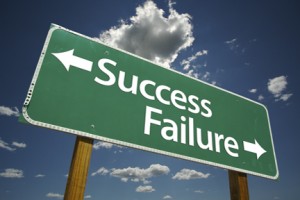As a forensic accountant, it is often not difficult to see when a business is in some kind of...
Co-Owned Businesses – Giving Employees A Stake In The Company
 The connection between productivity and morale is a demonstrated fact in the business world. Lack of commitment directly impacts a whole raft of productivity inputs such as number of work hours lost, workshop safety and wastage rates. Lack of commitment dries up a major source of money saving ideas - those that committed employees make.
The connection between productivity and morale is a demonstrated fact in the business world. Lack of commitment directly impacts a whole raft of productivity inputs such as number of work hours lost, workshop safety and wastage rates. Lack of commitment dries up a major source of money saving ideas - those that committed employees make.
Everyone recognises the value of employee engagement in the work they perform, but how to achieve it? The most effective way is shaping up to be employee ownership. Employee owned businesses (EOBs) give employees (who are now also the owners or part owners) a stake in getting things right. For the current owner, deciding on the most appropriate EOB model to restructure into needs careful thought and the support and advice of specialists and practitioners with experience in various aspects of employee share plans and facilitating employee share ownership. However, independent research in the US, UK, and mainland Europe, consistently finds that EOBs tend to be successful, competitive, good to work for, and sustainable. And as interest grows in the EOB model, governments are moving to create more amenable legislative and tax regimes to encourage their development.
When employees become owners the advantage for the company comes from them now taking a stakeholder, rather than a shareholder, view of management. Employees tend to become more entrepreneurial in their thinking, more committed to delivering quality, and more flexible in responding to the needs of the business.
This attitude contributed to the better than average success rate of EOBs in weathering the downturn. At Gripple, a UK company, when orders from its biggest customer (a company in the US that had run into financial problems) dried up, employees and directors both agreed to take salary cuts. Hugh Facey, Chairman of Gripple explains - “Because we are all shareowners everyone could see what was happening and why such action was necessary. It worked like glue, pulling everyone together”.
Just establishing an EOB alone isn't enough to get employees to think like owners. Companies set on creating an ownership culture need to make definite and continuing effort to teach employees about their stake and keep them focused on increasing stock value. This is the more easy the smaller the business. As EOBs grow in size, frontline employees are distanced from management and finance issues so it is necessary to develop innovative ways to keep them focused on their personal stake in maintaining quality work. At Van Meter Industrial Inc., a US electrical parts distributor with 340 employees spread out over several worksites, that meant, among other initiatives, a marketing campaign presented in terms the workers could relate to. One was based on a slogan: "Work 10, get five free." In other words, an employee there who was earning $30,000US pa - or $300,000 over 10 years - could stand to accumulate a company stock account worth $150,000 during that same period, based on stock price appreciation and company contributions.
For the owner of a closely held business, transforming to an EOB offers more benefits than increased profitability alone. One CEO says "The programme's [the change to an EOB] going great, I get to go home at 5 o'clock now. It used to be that if the fellows encountered any problems at all, they would stop working, call me, and wait for me to find a solution…Now that they are co-owners, it's all different. They actively participate in establishing our goals and plans, and they take initiative to resolve any issue that threatens to take us off our plan. And most of the time they handle the whole thing without calling me in.”
Employee ownership is also an increasingly popular solution to the business succession dilemma, particularly for smaller, privately owned businesses. A growing number of SME owners are opting to exit by selling their company to their own management and employees. This exit route can be the most advantageous way of extricating capital and taking advantage of government tax schemes that support employee buy-outs, while ensuring that the business continues to trade.



